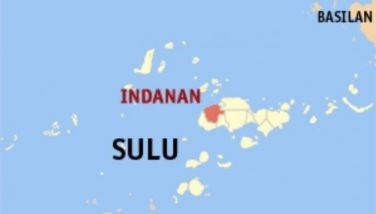Boracay stakeholders urged to reduce 'climate footprint'
An international environmental organization is urging stakeholders of the tourism industry in the island resort of Boracay to act together to reduce the “climate footprint” of the world-famous vacationers’ place and preserve it amid threats of global warming.
Studies have indicated that climate change due to global warming would severely affect, even submerge, many islands and islets worldwide.
Greenpeace, an independent, global campaigning organization that seeks to change attitudes and behavior to protect and conserve the environment, urged residents, local officials, tourists, and resort owners in Boracay to join hands to make the island the country’s “model climate-friendly tourist destination.”
Over the weekend, environmentalists and experts held a workshop on energy efficiency in Boracay. Greenpeace and affiliates of the Green Architecture Movement of the United Architects of the Philippines, Aklan Electric Cooperative, and Solar, Wind and Electric Power Inc. cited ways in which stakeholders of the Boracay tourism industry could lessen their climate footprint.
Renewable energy
Solar Generation, a youth movement of Greenpeace, even presented an exhibit on renewable energy, demonstrating how solar power can work for resorts as well as tourists.
“This is an initiative to focus attention on the climate change issue and the need for all to take assertive action. Mitigating climate change is a matter of our very survival. Tourism that is so dependent on the natural and the socio-cultural environment needs to be in the forefront working with conservationists and all citizens in achieving this,” said Beng Reyes-Ong, campaigner of Greenpeace Southeast Asia.
Citing the United Nations World Tourism Organization, Greenpeace said the tourism sector has become a “non-negligible” contributor to climate change through greenhouse gas emissions largely from the transport and accommodation of tourists.
Particularly, the group said, tourism contributes as much as five percent of all carbon dioxide emissions from human activities.
At the same time, Greenpeace pointed out that the tourism sector is specifically vulnerable to the impact of climate change.
According to Greenpeace, eight of the 12 provinces in the country that were identified in the Department of Tourism’s “Anchor Destinations” are vulnerable to “permanent or episodic flooding.”
These sites include premier beaches, mangrove forests and world-class dive spots, it said.
Win-win situation
Ong insisted that going renewable and becoming energy-efficient to address climate change is a win-win situation.
Ong said resorts can save money by saving electricity, while also contributing to efforts to mitigate the impact of climate change if they would tap renewable energy source.
Among the many positive results of such a move, Ong said tourists would learn about climate change solutions from the resorts.
“Then tourists can go back home or visit other places with the awareness that each of us can make a difference in stopping global warming,” Ong said.
The weekend workshop held in Boracay was part of Greenpeace’s “Save the Climate, Save Boracay” project that was launched in June during the “Quit Coal, Save the Climate” Philippine tour of the Greenpeace ship M.Y. Rainbow Warrior.
Greenpeace said the project, the first of its kind in the Philippines, is based on a manifesto earlier signed by Boracay’s tourism industry stakeholders that included, among others, the inclusion of energy efficiency measures and the promotion of renewable energy use as part of the environmental management plans for the island, particularly in the construction or expansion of establishments.
The manifesto also included the provision of regular energy audits, skill shares and workshops for establishments to ensure the continuation and replication of successful practices in the areas of energy and water conservation, as well as ecological waste management.
- Latest
- Trending





























